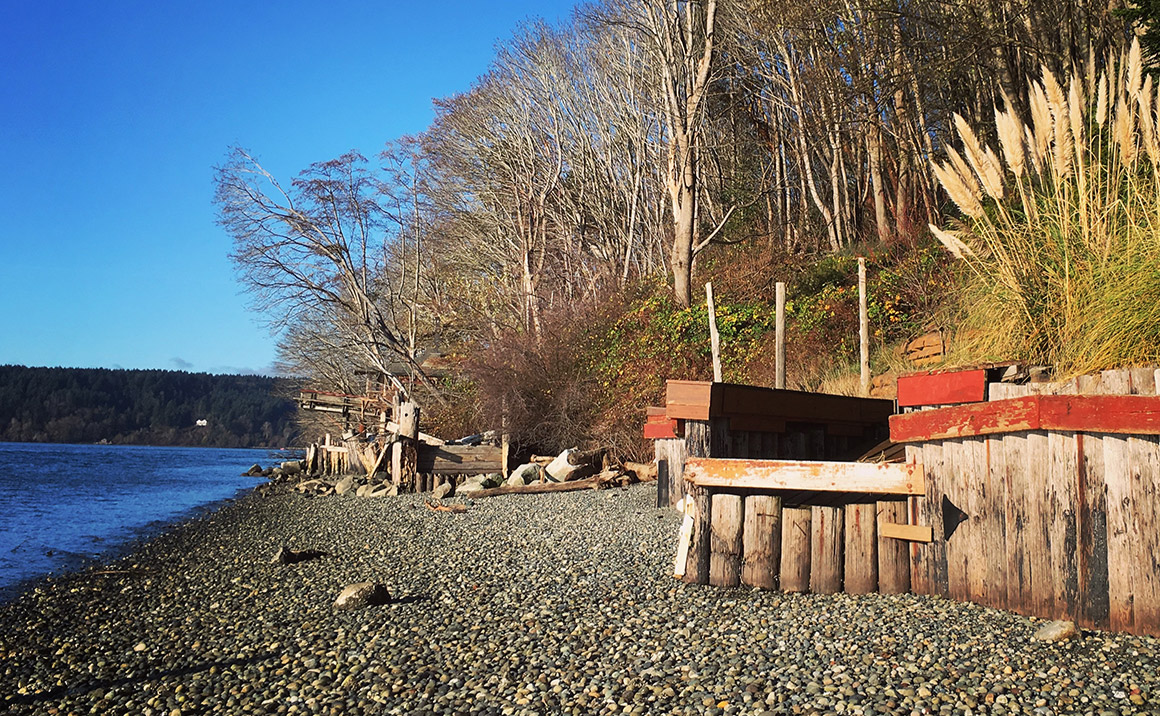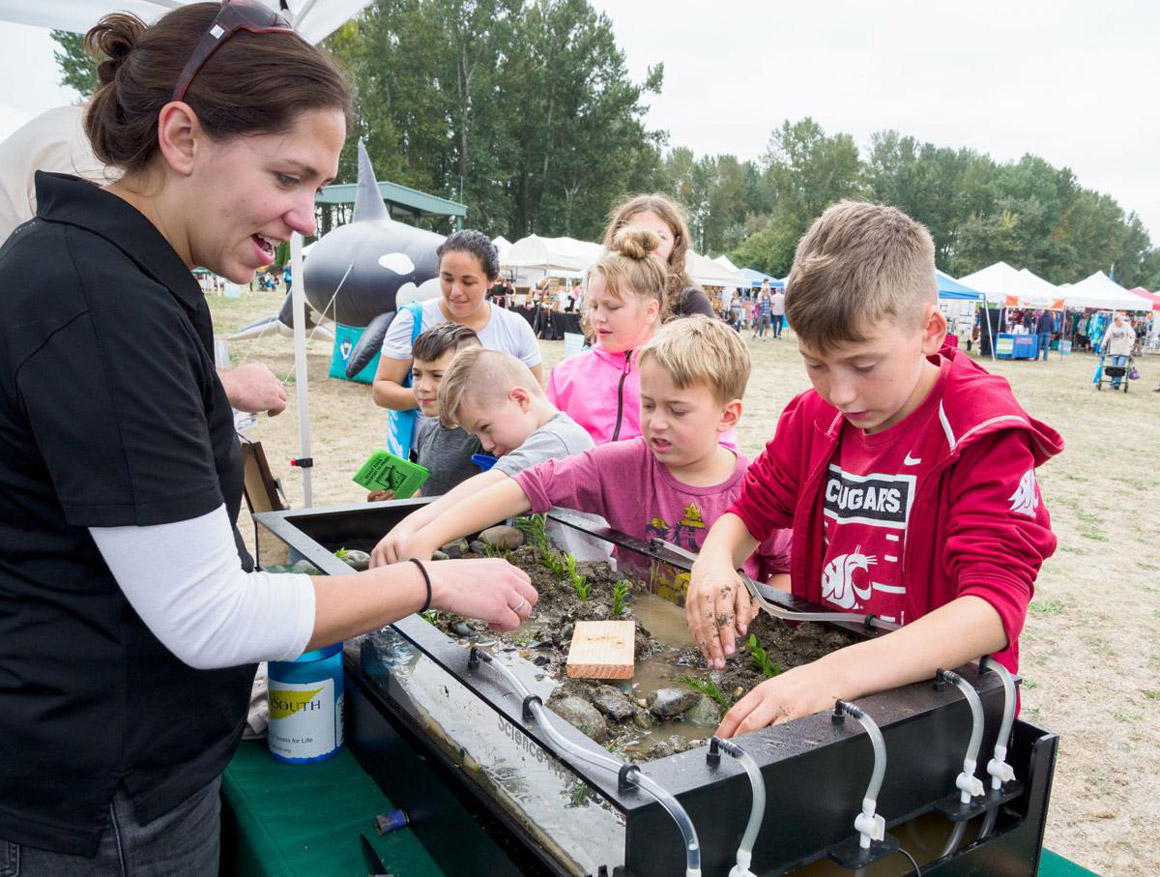Puget Sound is a deep fjord estuary that lies within the broader Salish Sea Washington State shares with British Columbia. It is the second largest estuary in the United States, fed by 19 river basins and 10,000 rivers. As a saltwater body, it is far from being uniform: each basin, carved by retreating glaciers more than 10,000 years ago, varies in its physical, chemical, and biological properties. Together, the basins contain an astounding diversity of life.
Humans have long relied on the Puget Sound watershed for healthy food and clean water, recreation, economic support, among other benefits. Puget Sound supports a large part of our state’s economy and provides vital recreational, spiritual, and other essential quality of life benefits.
Special Announcement: The Habitat, Stormwater, and Shellfish Strategic Initiative Leads (SILs) solicitations for competitive Request for Proposals (RFPs) have been released. Click here to learn more
Puget Sound is a Special Place We Call Home

Considered the largest estuary by volume in the United States (with perhaps the exception of unexplored estuaries in Alaska), Puget Sound is a complex ecosystem encompassing mountains, farmlands, cities, rivers, forests, and wetlands. In some ways, Puget Sound is as much about the land—the farms, forests, mountains and floodplains—as it is about the water itself. Photo Credit: Edmund Lowe Photography
A healthy Puget Sound is essential to sustaining vibrant, enduring natural systems and communities, honoring tribal treaty rights, and supporting our need for connection to the natural world. Puget Sound’s nutrient-rich ecosystems and temperate climate have allowed humans to thrive here for generations—honoring the land and its inhabitants, building lives and businesses, and cherishing the region’s natural beauty.
What's the Problem?

Bulkheads like the one pictured prevent natural migration and may create seaward erosion.
Human actions over the past century have damaged Puget Sound. These actions have degraded the water quality, water quantity, and habitats of the region, including the natural resources on which people depend.
People are drawn to the vibrant economy and landscape of Puget Sound. As the regional population grows, it brings changes to these landscapes through increased land development, infrastructure, and pollutants. The threat of climate change is ever-present, with warmer streams and ocean waters, reduced snowpack, more extreme weather events, and increased fires and floods. As a result, the pressures on the ecosystem relentlessly continue to take their toll on Puget Sound and the communities supported by it.
Stay Informed on Puget Sound Recovery

What Actions are We Taking to Recover Puget Sound and Build Resilience?

Soft shorelines improve water quality, provide fisheries habitat, increase biodiversity, and promote recreation.
Implementation Strategies are plans for achieving specific ecosystem targets for the Puget Sound Vital Sign indicators. The Vital Sign indicators are like a human’s blood pressure reading, helping reflect the health of the patient. Implementation Strategies are like the treatment plan to achieve better health - they describe the sequence of steps, activities, and results needed to move closer to a recovery goal.
Did you know?
The Puget Sound Partnership lead the creation of the early versions of the Implementation Strategies using the Open Standards Conservation Planning process. These standards were originally developed to help small non-profit organizations use a common vernacular to measure environmental outcomes and successes.
Initially developed and managed by the Puget Sound Partnership, most Implementation Strategies have a home within one of the Strategic Initiative Leads.
- Floodplains and Estuaries
- Land Development and Land Cover
- Shoreline Armoring
- Marine Vegetation *soon to be developed*
- Freshwater Quality: B-IBI --Benthic Index of Biotic Integrity
- Marine Water Quality
- Toxics in Fish
Did you know?
The Washington State statute that created the Puget Sound Partnership defines six recovery goals: Healthy human population, Vibrant quality of life, Thriving species and food web, Protected and restored habitat, Abundant water quantity and Healthy water quality. The Puget Sound Partnership is the state agency leading the region’s collective effort to restore and protect Puget Sound to meet these goals. It is considered a “backbone” organization in the parlance of Collective Impact practice, and serves to synthesize and harmonize the plenitude of efforts occurring across hundreds of tribes, agencies, non-profits, community groups, universities and local governments.
The roadmap to recovery is called the Action Agenda and is the guiding force in our shared work.
How Can I Use Implementation Strategies in My Work?

Biologists used a stream table to give kids a hands-on lesson on how river habitat supports salmon, and how humans can impact river ecosystems.
These strategies are designed to align and focus our recovery efforts on the most important things we need to do to recover Puget Sound.
This means focusing on the what, where, who and why of the matter: deciding WHAT work needs to be done WHERE, or in what geography, in collaboration with WHO, or what organizations and people, and WHY, relying on what we know from scientific monitoring and approaches that are known to be effective.
What’s effective applies not only to technical approaches but how programs are funded, incentives are designed, how information is packaged and communicated and how to change behavior.
Implementation Strategies help us decide what to prioritize in the Puget Sound Action Agenda, and help our Advisory Teams pick which projects to fund and approaches to take, to make the greatest difference in Puget Sound with EPA Geographic Funds. Aligning your work with the strategies will help the entire Puget Sound community swim together towards our ecosystem targets.
We plan to create helpful tools and communication materials to accompany these plans, and we want to make sure they are catered to the needs of our partners and audiences. If there's a tool you'd like to see to help you use these strategies in your area, please reach out and let us know!
Resources
- The primary home for information about Implementation Strategies is on the Puget Sound Partnership's Implementation Strategies webpage.
- More information about the Implementation Strategies is available on the Encyclopedia of Puget Sound and the Puget Sound Institute blog.
